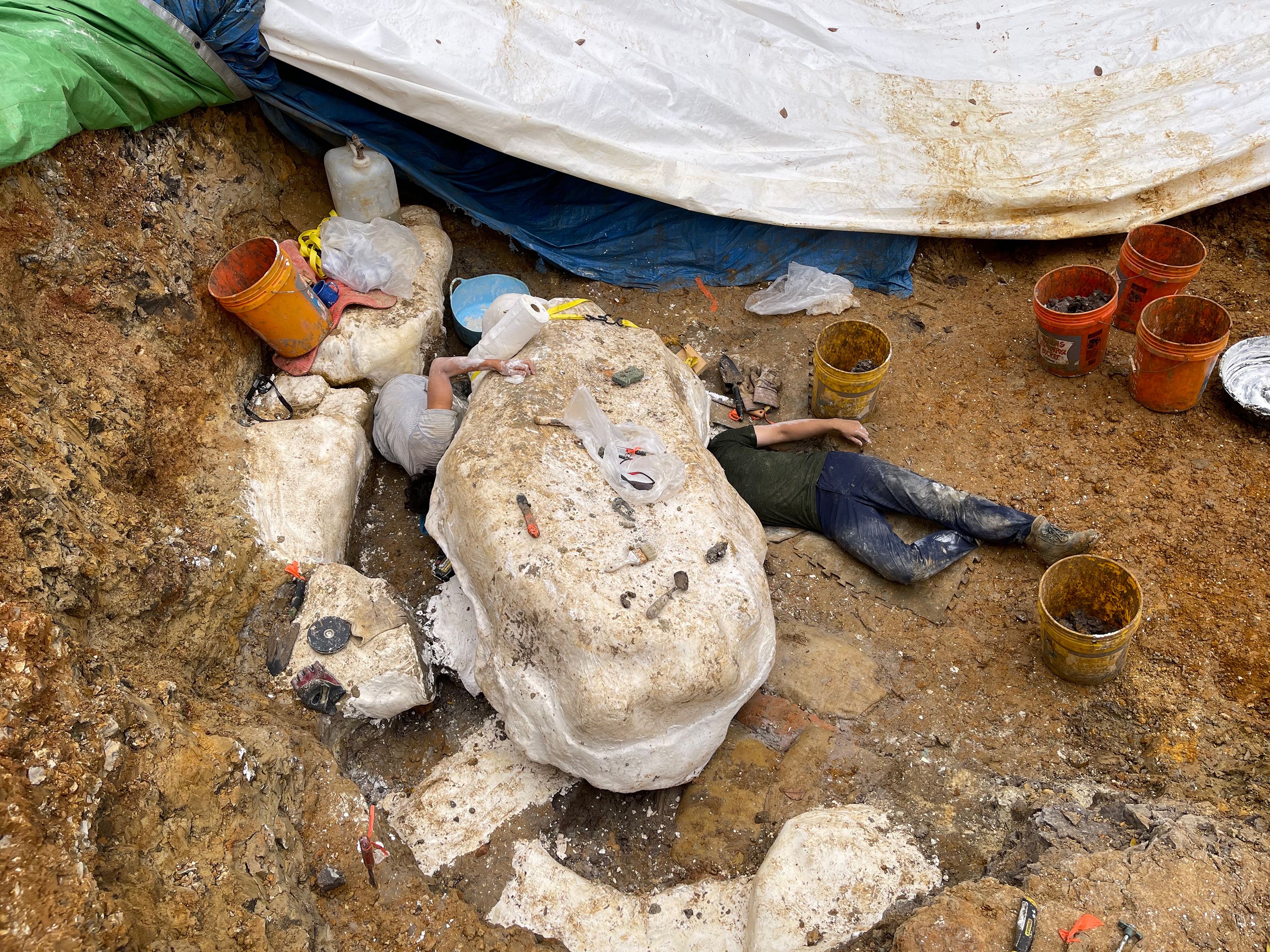Fossil of New Dinosaur Species Found in Egypt’s Desert

Paleontologists from Mansoura University have unearthed a fossil of a new species of dinosaur in the Dakhla oasis in central Egypt that lived nearly 80 million years ago. Scientists call the finding an “incredible discovery,” describing it as critical for science.
The remains of the animal indicate that the dinosaur was a plant-eating Cretaceous Period creature, which paleontologists call Mansourasaurus Shahinae.
Findings show that the dinosaur was about 10 meters long and weighed 5,000 kg and was a member of a group called titanosaurs that included the earth’s largest-ever land animals.
“Its remains […] are the most complete of any mainland African land vertebrate during an even larger time span, the roughly 30 million years before the dinosaur mass extinction 66 million years ago,” said paleontologist Hesham Sallam of Egypt’s Mansoura University, who led the study published in the journal Nature Ecology and Evolution, reports Reuters.
“It was thrilling for my students to uncover bone after bone, as each new element we recovered helped to reveal who this giant dinosaur was,” Sallam went on.
The African continent is unexplored in terms of dinasour fossils and the new finding in Egypt helps shed light on the fossil record there.

“Africa remains a giant question mark in terms of land-dwelling animals at the end of the Age of Dinosaurs,” said Eric Gorscak of The Field Museum, who worked on the research, published in the journal, Nature Ecology & Evolution, according to the BBC.
“Mansourasaurus helps us address longstanding questions about Africa’s fossil record and palaeobiology – what animals were living there, and to what other species were these animals most closely related?”
For the last 30 million years, the course of dinosaur evolution in Africa has remained much of a mystery.
Dr Matt Lamanna of Carnegie Museum of Natural History, a study co-researcher, said that his jaw “hit the floor” when he saw the pictures of the fossils.
“This was the Holy Grail,” he said. “A well-preserved dinosaur from the end of the Age of Dinosaurs in Africa that we palaeontologists had been searching for for a long, long time.”


 ÚLTIMAS NOTICIAS: Kanye West guarda silencio sobre los rumores de “incesto” — pero esta acción lo dice todo… y deja a todos perplejos Los Ángeles –…
ÚLTIMAS NOTICIAS: Kanye West guarda silencio sobre los rumores de “incesto” — pero esta acción lo dice todo… y deja a todos perplejos Los Ángeles –… 
 ÚLTIMA HORA: Podría perder el apoyo de Trump… pero FOX tiene otros planes aterradores que podrían cambiarlo todo Washington D.C. / Nueva York – Abril 2025…
ÚLTIMA HORA: Podría perder el apoyo de Trump… pero FOX tiene otros planes aterradores que podrían cambiarlo todo Washington D.C. / Nueva York – Abril 2025… 


